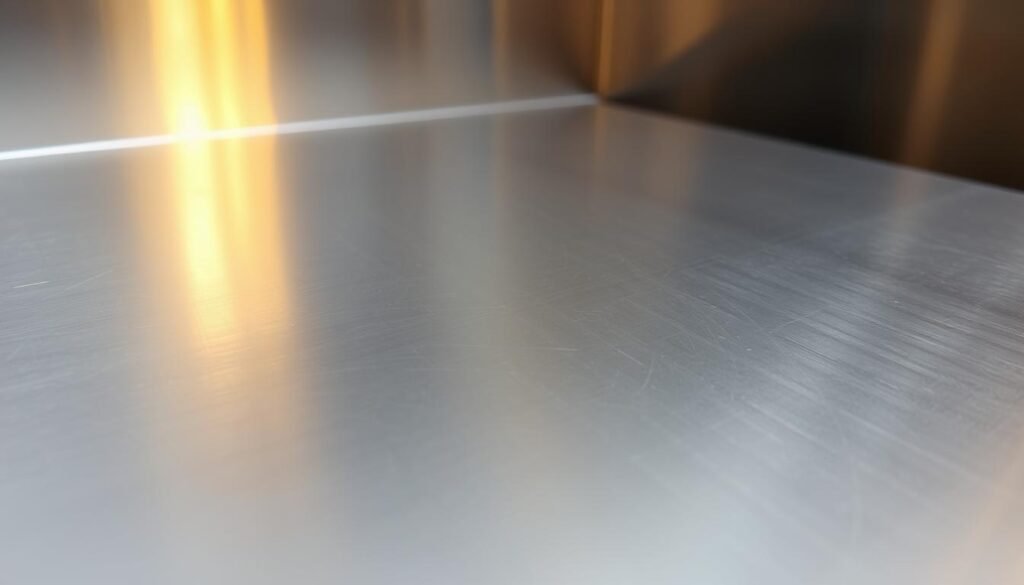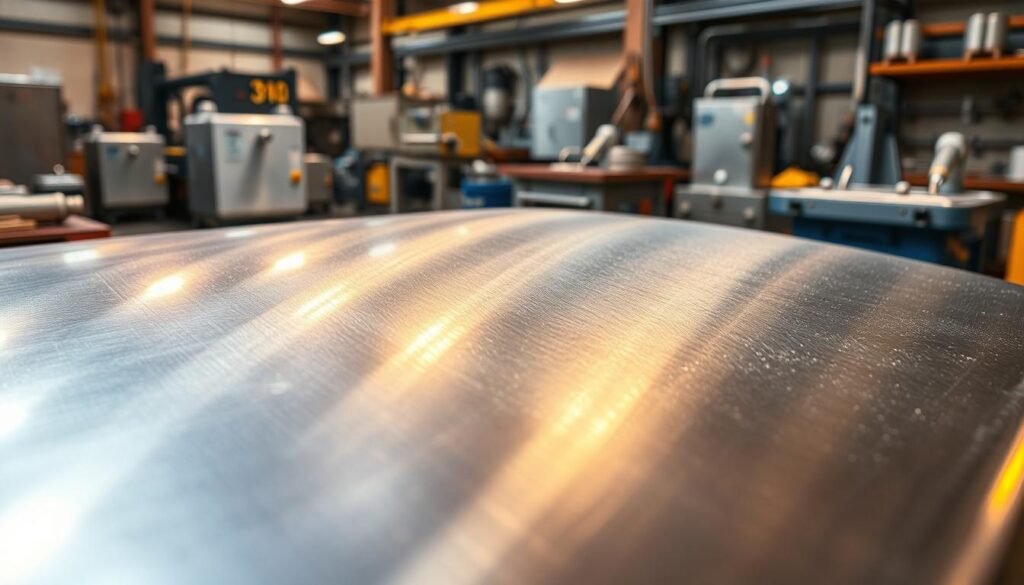Stainless steel is widely recognized for its corrosion resistance, but many wonder if it can actually corrode under certain conditions.
The addition of a minimum of 10.5% chromium content in steel alloys creates a protective layer that makes it highly resistant to corrosion and rust.
Despite its name, stainless steel is not completely immune to staining or corrosion—it’s “stainless” not “stainfree.” Understanding the factors that affect its durability is crucial for proper material selection across various applications, from automotive to food processing and medical industries.
The properties of steel that make it resistant to corrosion will be explored, along with the circumstances under which it might fail.
Understanding Stainless Steel and Its Properties
Stainless steel, an alloy of iron and other elements, is renowned for its strength and resistance to corrosion. It is fundamentally an iron-based alloy that contains various elements to enhance its properties.
What Makes Stainless Steel “Stainless”
The term “stainless” refers to the steel’s resistance to corrosion, primarily due to its chromium content. Chromium is the key element that provides stainless steel its corrosion resistance. The minimum chromium content required to classify steel as “stainless” is 10.5%.
Many grades of stainless steel contain between 12-20% chromium for improved performance. The presence of chromium leads to the formation of a thin, invisible chromium oxide layer on the surface when exposed to oxygen.
The Role of Chromium in Corrosion Resistance
The chromium oxide layer acts as a protective barrier, shielding the underlying metal from corrosion. This passive layer is self-healing; if damaged, it reforms in the presence of oxygen, ensuring continuous protection.

The composition of stainless steel, including elements like nickel, molybdenum, and carbon, affects its mechanical properties and corrosion resistance. Understanding these properties is crucial for selecting the appropriate type of stainless steel for specific applications.
Does Stainless Steel Corrode? The Truth About Its Durability
Despite its reputation for being resistant to corrosion, stainless steel can indeed corrode when exposed to certain environmental factors. The corrosion resistance of stainless steel is attributed to its chromium content, which forms a protective oxide layer on its surface. However, this layer can be compromised under specific conditions.
Environmental Factors That Affect Corrosion
Environmental factors play a significant role in determining the corrosion resistance of stainless steel. Chloride-rich environments, such as coastal areas or swimming pools, are particularly challenging for stainless steel. High temperatures, acidic conditions, and prolonged exposure to moisture can also compromise the protective chromium oxide layer.
The presence of salt and water can accelerate the corrosion process. For instance, in marine environments, the high salt content in the air and water can significantly increase the risk of corrosion.
Common Types of Stainless Steel Corrosion
There are several types of corrosion that can affect stainless steel, each presenting different challenges and requiring different handling strategies.
General Corrosion
General corrosion is characterized by a uniform loss of material across the entire surface of the stainless steel. It is the most predictable and manageable form of corrosion.
Galvanic Corrosion
Galvanic corrosion occurs when stainless steel comes into contact with a dissimilar metal in the presence of an electrolyte, leading to an electrochemical reaction that accelerates corrosion.
Pitting Corrosion
Pitting corrosion is a localized form of corrosion that results in the formation of small, deep holes or pits on the surface of the stainless steel. It is prevalent in environments containing chlorides.
Crevice Corrosion
Crevice corrosion occurs in tight spaces or crevices between two joining surfaces, such as under gaskets or in threaded joints. It is also a localized form of corrosion.
The following table summarizes the different types of corrosion and their characteristics:
| Type of Corrosion | Description | Common Environments |
|---|---|---|
| General Corrosion | Uniform loss of material across the surface | Acidic or high-temperature environments |
| Galvanic Corrosion | Electrochemical reaction between dissimilar metals | Presence of electrolytes, such as saltwater |
| Pitting Corrosion | Localized formation of small, deep holes | Environments containing chlorides |
| Crevice Corrosion | Localized corrosion in tight spaces or crevices | Under gaskets, in threaded joints, or in overlapping surfaces |
Preventing Stainless Steel Corrosion
Stainless steel corrosion can be effectively mitigated by adopting a comprehensive approach that encompasses design, fabrication, and maintenance. This multi-stage strategy is crucial for maximizing the durability and performance of stainless steel in various environments.
Design Considerations
Preparation during the planning phase is vital. Ensuring that the metal is used in areas with minimal water penetration can significantly reduce the risk of corrosion. Incorporating drainage holes and allowing for free air circulation are design elements that can prevent damage to the alloy. Selecting the appropriate grade of stainless steel for the specific environment is also crucial, as higher-grade alloys with more chromium and molybdenum offer better resistance in harsh conditions.
| Design Element | Benefit |
|---|---|
| Drainage Holes | Reduces water accumulation, minimizing corrosion risk |
| Air Circulation | Prevents moisture retention, reducing corrosion likelihood |
| Grade Selection | Ensures the stainless steel alloy is suited to the environmental conditions |
Fabrication Techniques
During fabrication, it’s essential to prevent cross-contamination with carbon steel or iron particles, as these can embed in the stainless steel surface and create sites for rust formation. Proper welding techniques, including the use of appropriate filler materials and post-weld cleaning, help maintain the corrosion resistance of stainless steel components.

Maintenance and Coatings
Regular cleaning and maintenance are vital for preserving stainless steel’s protective layer. Using non-abrasive cleaners and avoiding chloride-containing products is recommended. Additionally, applying protective coatings such as polyurethane, epoxy, or specialized sealants can provide extra protection in extremely corrosive environments.
By understanding the specific environmental challenges that stainless steel will face, targeted prevention strategies can be implemented to maximize its service life.
Conclusion
Ultimately, understanding the nuances of stainless steel corrosion is essential for maximizing its benefits in diverse applications. While stainless steel is remarkably resistant to corrosion, it is not completely immune to it. The corrosion resistance of stainless steel stems primarily from its chromium content, which forms a protective oxide layer.
Different grades of stainless steel offer varying levels of corrosion resistance, making proper material selection critical for specific environments and applications. By implementing proper design considerations, fabrication techniques, and maintenance practices, the service life of stainless steel components can be significantly extended.
Despite potential corrosion issues, stainless steel remains one of the most versatile and reliable materials for applications ranging from automotive and aerospace to food processing and medical devices. The continued development of new stainless steel alloys with enhanced properties ensures that this metal will remain at the forefront of engineering solutions for corrosion-resistant applications.
